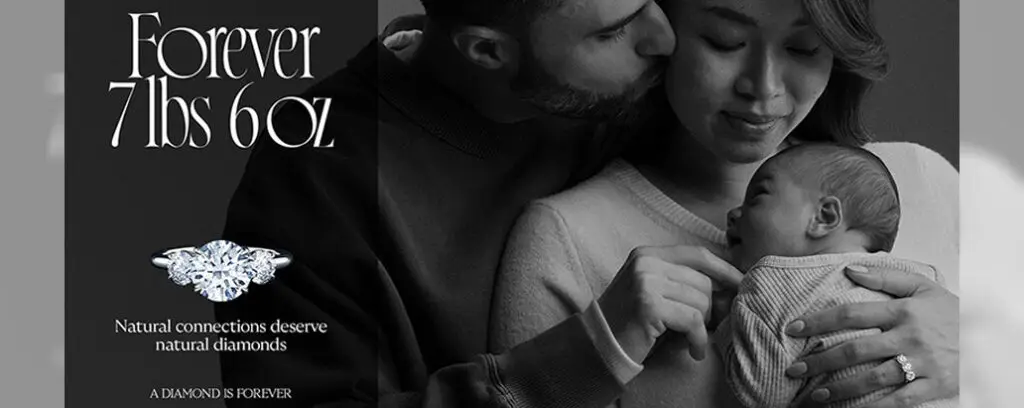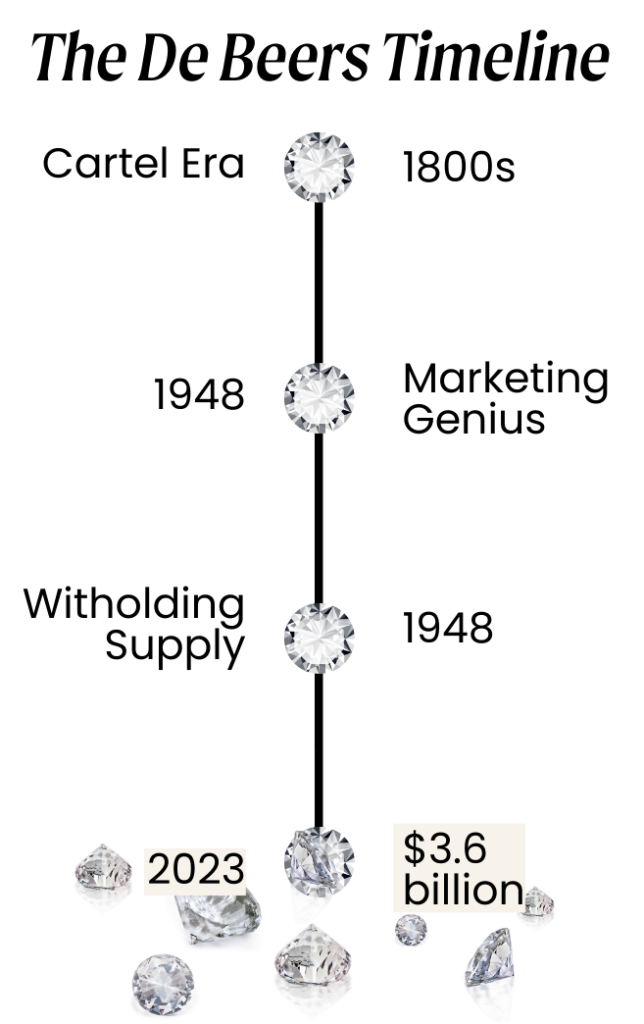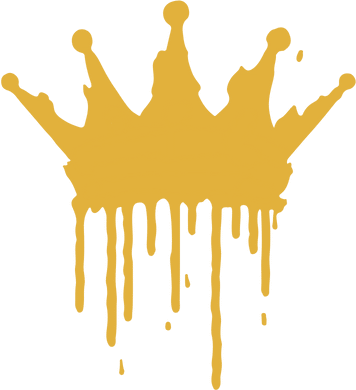If you’ve ever wondered why a tiny rock can cost as much as a small car, you’re not alone. Diamonds are dazzling, sure, but their price tag? Eye-watering. But what if we told you it has less to do with rarity and more to do with clever marketing, monopolisation, and one company’s ability to make the whole world say, “I do” to their sparkle?
Diamonds Aren’t Rare, but Their Availability Is #
Let’s set the record straight: diamonds are not rare. In fact, they’re more common than emeralds, rubies, or sapphires. But for over a century, De Beers – a British/South African mining company – controlled the global diamond market so tightly that they cleverly manipulated diamond into seeming the rarest treasure on Earth.

#
#
The De Beers Monopoly #
 #
#
#
The Cartel Era: Starting in the late 1800s, De Beers created a cartel to manage diamond supply. They bought up mines, controlled the flow of diamonds onto the market, and stored vast quantities in vaults to create artificial scarcity. Think of it as putting diamonds on a diet: fewer stones on the shelves, higher prices at the till. From its inception in 1888 until the start of the 21st century, De Beers controlled 80% to 85% of rough diamond distribution and was considered a monopoly.
Marketing Genius: In 1948, and needing a boost after the a decline in sales following the Great Depression, De Beers launched their now-iconic slogan, “A Diamond Is Forever”. This was written by Frances Gerety, a copywriter at the Philadelphia Ad Agency N. W. Ayer & Son, who was given the job purely as she was one of few women in the office.
The slogan was written on a piece of paper late one night, and though Frances’s associates were hesitant to use it due to the strange grammar, it has become one of the most recognisable advertising moments of all time (thanks in no small part to its wild success). It wasn’t just an ad – it was a cultural reset – and “A Diamond Is Forever” has been used in every single De Beers ad since 1948 to present day.
Suddenly, diamonds were propelled from being pretty items to ones that were essential to proposals, anniversaries, and declarations of eternal love. Because who can argue with forever?
Withholding Supply: By pairing this new found consumer drive and desire for diamonds with their supply of the stones, De Beers ensured that diamonds became completely synonymous with exclusivity. The fewer there are, the more desirable they seem: a classic case of manufactured demand. To contextualise just how powerful this re-positioning of the diamond was for De Beers, from 1939 to 1979, their wholesale sales in the United States increased from a modest $23 million to a massive $2.1 billion.
In 2023, De Beers’ rough diamond sales were $3.63 billion.
Why Are Mined Diamonds Still So Expensive Today? #
De Beers’ monopoly may have waned, but the high price of diamonds hasn’t:
- Tradition Lingers: Decades of clever advertising have ingrained the idea that diamonds are the only suitable symbol of love. Even as new generations challenge traditions, the diamond ring remains a cultural heavyweight.
- Mining Costs: Extracting diamonds is labour-intensive, environmentally damaging, and expensive. From digging up tonnes of earth to transporting stones halfway around the world, mining is a logistical nightmare (and a planet-sized headache).
- Market Dynamics: Even though new players have entered the diamond market, the industry still relies on limited supply and high demand to keep prices inflated.
 #
#
#
Emeralds: The Underrated Treasure #
Here’s a fun fact to blow your mind: emeralds are actually rarer than diamonds. Yet, they’re often less expensive. Why?
Put simply, they didn’t have the marketing machine (or cartel) that diamonds did. Without a company like De Beers to create global demand, emeralds never got the “forever” treatment. Diamonds may be forever, but emeralds? They’re quietly basking in their exclusivity, unbothered by the hype (and we LOVE them for it).
Why Lab Grown Diamonds Are The Better Choice #
Lab-grown diamonds don’t just sparkle: they shine a light on the diamond industry’s outdated practices, exposing why something positioned as the most desirable object – the mined diamond – should actually be one of the least.
- No Cartels, No Markups: Lab-grown diamonds don’t rely on mining cartels to control their supply. They’re made in controlled environments, so there’s no hoarding, no vaults, and no artificial scarcity. What you see is what you get – at a fair price.
- Same Sparkle, Better Value: Chemically, physically, and optically identical to mined diamonds, lab-grown diamonds offer the same brilliance without the hefty markup. You’re not paying for someone else’s marketing, you’re investing in quality.
- Ethical and Eco-Friendly: No displaced communities, no deforestation, and no murky supply chains. Lab-grown diamonds give you the sparkle without the guilt, making them a perfect fit for modern values.
- Breaking the Cycle: By choosing lab-grown, you’re saying no to outdated traditions of monopolisation and yes to a future that values transparency, affordability, and innovation.
Our Take on Mined Diamonds #
The diamond industry might have built its empire on clever tricks and exclusivity, but times are changing, and so are the choices you’re able to make. At Adamas Studio, we believe your diamond should reflect your values, not outdated industry practices. That’s why we champion lab-grown diamonds: real, ethical, and free from the nonsense of inflated prices and artificial scarcity.


